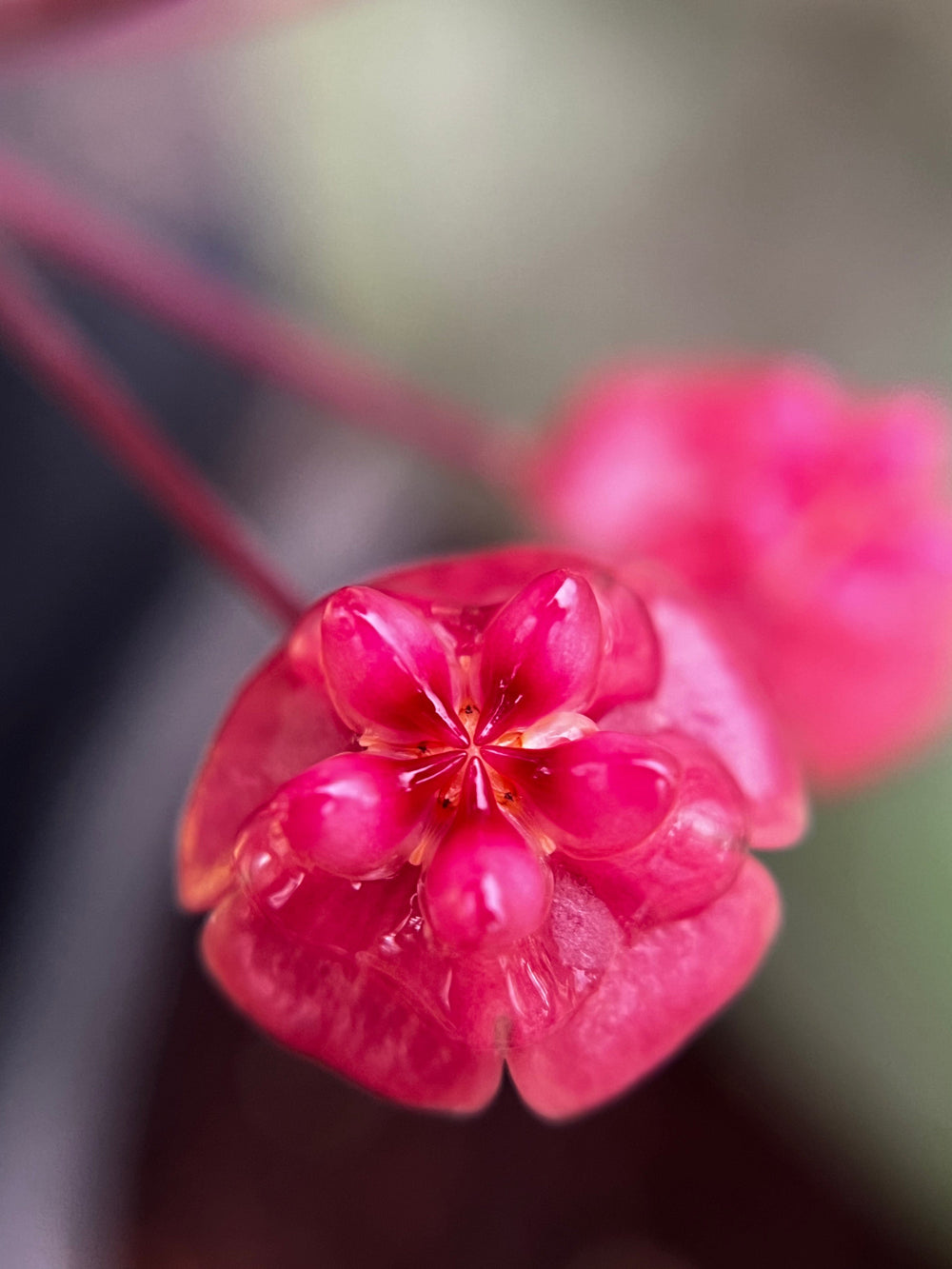Shade vs Sun: A Plant's Guide to Light Intensity

Table of Contents
- Types of Light Requirements
- What Affects Light Intensity
- How to Know What Your Plant Needs
- What About Hoyas?
- The Bottom Line
It’s no secret that all plants need sun - it’s what allows them to convert water and carbon dioxide into necessary nutrients, especially glucose, which is a sugar plants use as a source of energy. What changes from plant to plant, however, is the amount of sunlight that they need.
If you’ve ever bought a plant, you must have noticed that there are instructions on how to take care of it properly. One of those is the amount of sun they require to thrive. Full sun, part sun, part shade, full shade - these are the most common terms you will see.
Why is that important? Well, to put it simply, if your plant’s needs are not being met, not only will it not bloom, or have significantly fewer blooms than it could’ve had, but it can also die completely - and that’s the last thing you want to happen. So, what do all of these terms mean exactly? And how do hoyas fit into it? That’s what we’ll be talking about here.
Types of Light Requirements
As mentioned, there are different plant light requirements. Let’s go through them so you have a better idea of how to provide your plants with what they need.
Full Sun Plants
If a plant requires full sun, it means that it will best thrive when provided with at least 6 hours of direct sunlight daily. Some plants might need a break during the day, but generally speaking, if you place them in a location that gets plenty of direct sunlight they should be more than fine.
Examples of full sun plants include hibiscus, calla lily, lavender and daisies, as well as succulents, snake plants and spurge plants.
Part Sun and Part Shade Plants
Part sun plants should be exposed to anywhere from 3 to 6 hours of direct sunlight per day. Part shade plants are similar in terms of the hours, but there’s a major difference between them - part shade plants need to be protected from the strongest sunlight, which falls around noon.
If your plant says it requires part sun or part shade, consider either placing it in a room with filtered light where you can keep it for most of the day, or one that gets direct sunlight, but then keep the exposure to only morning or afternoon rather than both.
Examples of part sun and part shade plants include primrose, pansies, violas, rhododendron, begonia, lily and fuchsia.
Full Shade Plants
Full shade plants belong to a more diverse category - some full shade plants are more than fine with indirect light (or no more than 3 hours of direct sunlight a day), while others prefer to be almost completely sheltered from it. Here, the keyword is almost, as there are very few plants that actually grow well with completely restricted access to sun.
Dappled shade, which is a term referring to the shade provided by deciduous trees, can be a good setting for this type of plant. Full shade loving plants should also not be exposed to midday sun, as that’s when the sun rays are the harshest and the most dangerous for your plants.
Some examples of full shade plants include stinking iris, wood spurge, snowdrop, bellflower, Siberian bugloss and ivy.
What Affects Light Intensity
There are several factors that affect the intensity of the light your plant is receiving. The first one is window direction - generally speaking, south-facing windows are the ones to receive the most direct sunlight during the day, while north-facing windows receive the least (almost none) of it.
Another factor that affects it is the time of day. Typically, morning and afternoon light is less intense than midday light. Then, there’s also the season - fall and winter tend to have less intense light than spring and summer.
Finally, the distance between the light source and the plant can also play a significant role - the light closer to the source is usually more intense and becomes less and less intense as you move away from it.
How to Know What Your Plant Needs
When you buy a new plant, it should contain information on the packaging about what exactly are the best light settings for your plants. If it doesn’t, there are plenty of online plant care guides and other resources available and easily accessible. Keep in mind that light requirements might differ between different types of the same plant.
Is My Plant Not Getting Enough Light?
If you’ve had your plant for quite a while and are worried it does not get as much light as it should, the easiest way to assess it is by simply looking at it. Some signs indicating light deficiency include:
- The plant is leaning towards the sun - If your plant’s limbs are long, skinny and directed towards the light source, it’s possible more light is needed.
- The plant is not growing properly - If your plant takes a while to grow, has stopped growing completely or its bloom is not as expansive as it should be, chances are the reason is the lack of sunlight.
- The plant has yellow leaves - Discoloration, particularly yellow or pale leaves, is another signal that your plant might require more light than it’s currently getting.
If you notice any of these signs in your plant, try moving it to a different location or, in cases it is not possible to provide it with more light, for example because of the season, you can help yourself with artificial lighting. However, it cannot be just any lighting - for your plants to grow well under these circumstances, you need grow lights.
Grow lights are specifically made to substitute natural sunlight so that plants recognize them as the light they need for photosynthesis.
What About Hoyas?

So, what do hoya light requirements look like? Well, as a plant native to rainforests in Asia, the answer is not that much. Hoyas thrive best when exposed to bright but indirect sunlight, which resembles the conditions they have in their natural habitat.
The Bottom Line
Different plants have different light requirements, and most of the time, that information will be present on the packaging - if it’s not, you can find plenty of resources online.
Light is one of the basic needs of every plant, so understanding how much of it your specific plant requires is of utmost importance - if it gets too little or too much of it, it can significantly affect your plant’s health, which further accentuates just how crucial it is to get it right.











